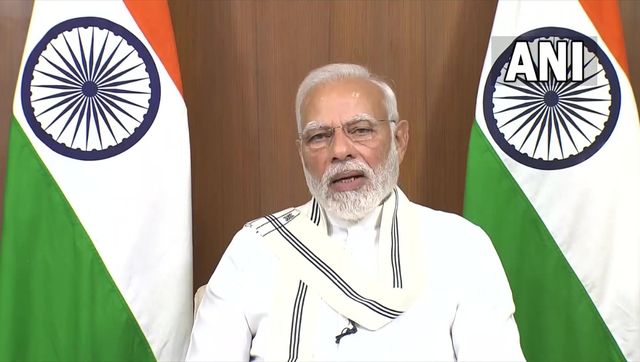This will be the last full Budget of the Narendra Modi government and the focus will be on rural/agri spending. An announcement of a feel-good social sector scheme could be funded by the cushion provided by lower expenditure on subsidies. We expect the FY24 Union Budget to focus on four priorities, including a rural focus, capex, and manufacturing push, as well as prioritizing macro stability. We believe the government’s focus on investments is likely to continue, and it will be a key factor in fueling the economic growth next fiscal. However, in the backdrop of a global growth slowdown and geopolitical uncertainty, the FY’24 Union Budget needs to balance supporting growth in economic activity and fiscal consolidation. The Budget should provide a clear fiscal path for the medium-term to emphasize the government’s commitment to reduce its fiscal deficit over the next 2-3 years. The government is expected to move towards fiscal consolidation, budgeting a lower fiscal deficit to GDP ratio of around 5.8 per cent for FY’24. Thus, supporting economic growth and fiscal consolidation are expected to be the twin focus areas in the upcoming Budget. Key focus areas • Employment generation and inclusive growth: Increased spending on health, education, and skilling for social infrastructure development and focus on the development of agriculture and rural economy. • Commitment to Capital Expenditure (capex). The government had budgeted a high capex of Rs 7.5 lakh crore in FY’23. The capex target is likely to rise by 10-12 per cent in FY’24 • Government’s focus on infrastructure spending will continue in FY’24· Enhancing of PLI scheme to potential upcoming industries and MSMEs for providing a boost to exports • Renewed focus on rural development: The Budget could increase allocations towards the rural employment scheme, MGNREGA, vs FY23’s Rs 730 bn (0.3 per cent of GDP). • Implementation of the National Logistics Policy, which will help ease bottlenecks and reduce costs. Sector-specific expectations Auto, auto components • FAME II is to be extended beyond March 2024 to capitalize on the growing demand. It should be revised to include commercial vehicles • The expectation is to make the PLI scheme more inclusive to include small players of startups contributing to the EV ecosystem • The government will continue its thrust on green mobility, infrastructure projects, and job creation in the upcoming Budget, which would consequently support the automotive sector Banking, financial services • Focus on the housing sector through ‘Housing for All’ - higher deduction for housing loans given the rise in interest rates and property prices • No major budgetary allocation for recapitalizing public sector banks since the capital and solvency position of the public sector banks has been the best in the last eight years Infrastructure • Focus on key infrastructure sectors like roads, railways, drinking water, and sewerage, urban and rural infra to meet the investments under the National Infrastructure Pipeline (NIP) with an increase in capital allocation Healthcare and Education • Due to the growing need for health facilities and infrastructure across the country, there is an expectation that the healthcare budget will see an increase of 20-40 per cent • Incentives to promote private sector investments (both greenfield and brownfield expansions) to improve the penetration of healthcare • A proper roadmap to incentivize the top universities to set up under the International Financial Service Centre Authority (IFSCA) Steel • Reduction in basic customs duty on raw materials like coking coal, ferro nickel, iron, and stainless-steel scrap from the current levels to nil • Increasing budgetary allocation towards the PLI scheme for the steel sector. Real estate • An increase in tax exemption on home loan interest – a raise in deduction limit from Rs 2 lakh to Rs 5 lakh under section 24 and focused tax deduction on principal repayment of housing loans under section 80C of the Income Tax Act Power and Renewables • Measures to promote investments in energy storage – battery storage and pumped hydro projects • The PLI scheme to incentivise the manufacturing of grid-scale battery storage and manufacturing electrolyzers to produce green hydrogen Direct taxation • Expectations are getting built in for tax relief as it is the Narendra Modi government’s last full Budget. Media is abuzz with the expectation that the government will increase the disposal income in the hands of taxpayers by reducing the tax rate from 30 per cent to 25 per cent and raising the threshold of the highest slab rate from Rs 10 lakh to Rs 20 lakh • Increasing the limit under Section 80C and 80CCD Indirect Taxation • Both direct and GST collections have exhibited strong growth compared to last year and are likely to exceed the estimates • The indirect tax law may not likely see any major reforms. However, expectations are doing the rounds of merging of the 12 per cent and 18 per cent tax slabs in order to decrease the total number of slabs under GST The writer is Head of Equity Research at Fintoo @FintooApp. Views expressed are personal. Read all the Latest News , Trending News , Cricket News , Bollywood News , India News and Entertainment News here. Follow us on Facebook, Twitter and Instagram.
The government’s focus on investments is likely to continue, and it will be a key factor in fueling economic growth next fiscal
Advertisement
End of Article


)

)
)
)
)
)
)
)
)



